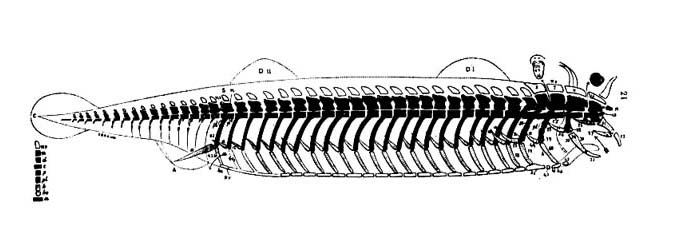"In order to adequately understand their apparently idiosyncratic contributions... riddled with jargon and with a mysteriously ineffable systematicity..." (E. Grosz)
Describing the development of weapons such as the saber or the sword, Deleuze and Guattari relate how metallurgy follows variations in materials and their qualities (spatio-temporal haecceities) and transforms them into features (traits of expression) such as hardness, sharpness and finish.
"We may speak of a machinic phylum or technological lineage, wherever we find a constellation of singularities , prolongable by certain operations, which converge, and make the operations converge, upon one or several assignable traits of expresssion" ..."Each phylum has its own singularities and operations...which determine the relation of desire to the technical element."...
"We will call an assemblage every constellation of singularities and traits deducted from the flow of matter-movement. The assemblages cut the phylum up into distinct, differentiated lineages, at the same time as the machinic phylum cuts accross them all." (Thousand Plateaus, p. 406) Examples of these assemblages include the nomads' invention of the man-horse-bow assemblage.
"The machinic phylum is materiality, natural or artificial, and both simultaneously; it is matter in movement, in flux, in variation, matter as a conveyor of singularities and traits of expression...This matter flow can only be followed. The artisan is one who is determined to follow a flow of matter as pure productivity. The artisan is the itinerant, the ambulant. His work is a legwork. To follow the flow of matter...is intuition in action." (p.409) (this is neither nomadic nor sedentary, but in contact with both) -- minor science.
"Why is the machinic phylum, the flow of matter, essentially metallic, or metallurgical?" (p 410) "Metallurgy is the consciousness or thought of the matter-flow...The machinic phylum is metallurgical, or at least has a metallic head, as its itinerant probe-head or guidance device." In this respect, Deleuze and Guattari follow the trope established by the Futurists and followed by the architectural avant-garde, that described engineers as noble savages at the vanguard of technological innovation, "men of the people without culture or education," endowed with "the gift of mechanical prophecy, the flair for metals." (Marinetti, Le Futurisme, Quoted in Reyner Banham, A Concrete Atlantis, p.204)
According to Manuel de Landa, for Deleuze the machinic phylum is the overall set of self-organizing processes... in which a group of previously disconnected elements suddenly reaches a criticial point in which they begin to "cooperate" to form a higher entity. The notion of a machinic phylum blurs the distinction between organic and non-organic life. Phenomena of self-organization occur whenever a bifurcation takes place in phase space: when a new attractor appears or when the system's attractors mutate in kind.
According to de Landa, Deleuze realized the philosophical implications of trajectories, attractors, and bifurcations in phase space . He emphasized the ontological difference between "actual physical systems" (represented by trajectories in phases space), and "virtual physical systems" represented by attractors and repellors. Although he did not mention bifurcations by name, he explored the idea that special events could produce "an emission of singularities", that is, the sudden creation of a set of attractors and repellors. Thus in addition to "actual machines", there are two layers of "virtual machines" . The world of attractors (the first layer) defines the long-term tendencies of reality. The world of bifurcations modifies those tendencies and represents the source of creativity and variability in nature. (see de Landa p. 236 and Deleuze Logic of Sense)

